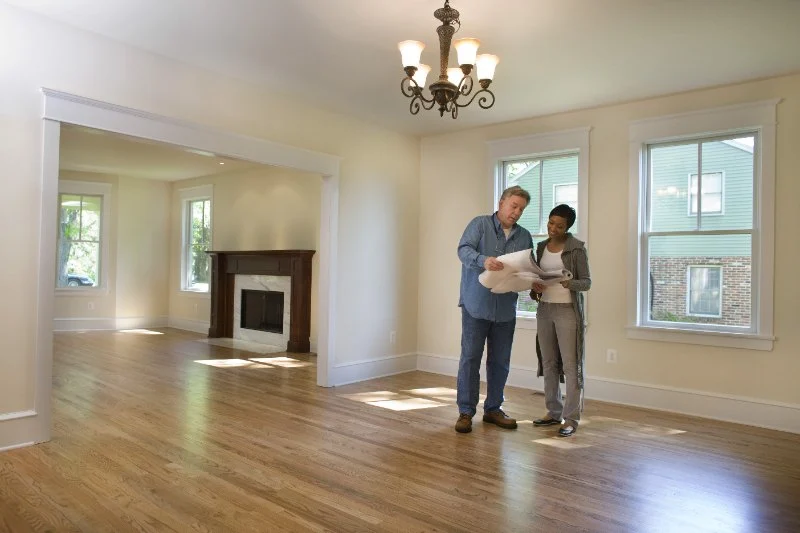
How to Negotiate Repair Requests After Home Inspections
- 1. Understanding Repair Requests in Home Inspections
- 2. Evaluating the Importance of Requested Repairs
- 3. Effective Negotiation Strategies for Home Repairs
- 4. Real-Life Case Study: Successfully Navigating Repair Requests
- 5. Conclusion: Reaching a Fair Agreement
1. Understanding Repair Requests in Home Inspections
After a home inspection, the buyer or seller might find themselves facing a long list of requested repairs. These requests can range from minor cosmetic fixes to more significant issues that could affect the home’s safety or livability. Understanding the purpose behind these requests is key to navigating the next steps. A home inspection is not a pass/fail test, but rather a tool to identify potential problems that might affect the value of the home or the safety of its inhabitants. Once you receive the inspection report, it's important to carefully consider which repairs are reasonable and which may be negotiable.

90W Luxury Apartments / 90w nyc
New YorkNew York CountyNew York
90 Washington St, New York, NY 10006, USA
2. Evaluating the Importance of Requested Repairs
Not all repair requests are created equal. Some may be essential for maintaining the safety of the home, while others may be purely aesthetic. Here are some steps to help you evaluate which repairs should be addressed:
1. Prioritize Safety Issues
Safety-related issues such as electrical faults, plumbing leaks, or structural problems should always be given top priority. These are repairs that need to be addressed before moving forward with the sale. If these issues are not dealt with, they can not only pose risks but can also potentially reduce the value of the property.
2. Consider the Age and Condition of the Home
The age of the home plays a crucial role in determining whether requested repairs are reasonable. Older homes may have issues that are expected and part of normal wear and tear. You should not be expected to fix every issue that arises, but focusing on major safety concerns or systems that will affect the functionality of the home is key.
3. Cosmetic vs. Functional Repairs
Cosmetic repairs, such as minor cracks in the walls or outdated paint, may be negotiable, depending on the buyer’s preferences. However, functional repairs such as malfunctioning HVAC systems or plumbing issues should be prioritized. Buyers and sellers should focus on negotiating repairs that directly impact the comfort or safety of the home.
3. Effective Negotiation Strategies for Home Repairs
Negotiating repair requests after a home inspection can be tricky, but it’s crucial to approach the conversation thoughtfully. Here are some strategies to help navigate the process:
1. Be Transparent
When negotiating repairs, honesty is key. Sellers should be upfront about what repairs can or cannot be completed. If the seller isn’t able to complete certain repairs, they should offer to adjust the price or offer credit towards repairs. Similarly, buyers should communicate their priorities clearly and be prepared to compromise on non-essential issues.
2. Offer Solutions Instead of Demands
Rather than demanding that the seller complete all repairs, try to propose reasonable solutions. For example, instead of asking for a new roof, a buyer might request a price reduction or a credit for the cost of the repair. By approaching the negotiation from a collaborative standpoint, both parties can work together to find a fair resolution.
3. Get Estimates for Major Repairs
If the repairs required are significant, it’s a good idea to get estimates from contractors. This can provide a clearer picture of what the repairs will cost and help both parties understand the financial implications. Use these estimates as a basis for further negotiation, whether it’s in the form of a price reduction or seller concessions.
4. Understand the Local Market Conditions
The housing market can impact repair negotiations. In a seller’s market, where inventory is limited, buyers may have less leverage to ask for repairs. In a buyer’s market, where there’s more competition and less demand, buyers may be able to negotiate more aggressively. Understanding the current market dynamics can give you a better idea of how much room you have for negotiation.
4. Real-Life Case Study: Successfully Navigating Repair Requests
Let’s take a look at a real-life case where repair negotiations were successfully handled:
Case Study: The Fixer-Upper
Sarah and John were purchasing a 25-year-old home that required several repairs, including plumbing and electrical work. After receiving the inspection report, Sarah was concerned about the condition of the roof, which had several years left before needing replacement. Rather than asking the seller to replace the roof entirely, they negotiated for a credit towards the roof repair, which allowed them to handle the issue post-purchase. This solution satisfied both parties as the seller avoided the expense of replacing the roof, and Sarah and John were able to use the credit to address the issue once they moved in.
5. Conclusion: Reaching a Fair Agreement
Negotiating repair requests after a home inspection can be stressful, but by following these tips, you can ensure a fair outcome for both parties. Whether you’re the buyer or the seller, open communication, flexibility, and a collaborative attitude can lead to a solution that works for everyone. If you’re unsure of how to handle specific repair requests, consider consulting with a real estate professional or contractor to help guide your decisions.








 Regus0.0 (0 reviews)
Regus0.0 (0 reviews) Artemisia Management LLC3.0 (17 reviews)
Artemisia Management LLC3.0 (17 reviews) New Island Realty Inc.3.0 (8 reviews)
New Island Realty Inc.3.0 (8 reviews) Medow Property Group Ltd0.0 (0 reviews)
Medow Property Group Ltd0.0 (0 reviews) Carnegie House (enter on 6th Ave)4.0 (8 reviews)
Carnegie House (enter on 6th Ave)4.0 (8 reviews) venegas&latinos associates0.0 (0 reviews)
venegas&latinos associates0.0 (0 reviews) How to Research Neighborhood Trends Before Buying – Smart Homebuyer Insights | Luxen House Realty Hub
How to Research Neighborhood Trends Before Buying – Smart Homebuyer Insights | Luxen House Realty Hub Tips for Boosting Your Home’s Curb Appeal Before Listing | Luxen House Realty Hub
Tips for Boosting Your Home’s Curb Appeal Before Listing | Luxen House Realty Hub Tips for Buying a Home in a Historic District: What You Need to Know
Tips for Buying a Home in a Historic District: What You Need to Know Understanding the Pros and Cons of Short-Term Rentals
Understanding the Pros and Cons of Short-Term Rentals Understanding the Risks and Rewards of Foreclosed Property | Luxen House Realty Hub
Understanding the Risks and Rewards of Foreclosed Property | Luxen House Realty Hub How to Sell a Home Quickly During Peak Season - Tips and Strategies
How to Sell a Home Quickly During Peak Season - Tips and Strategies